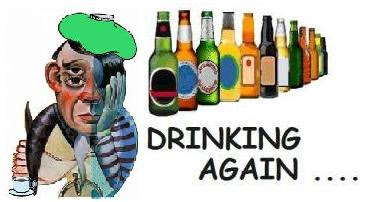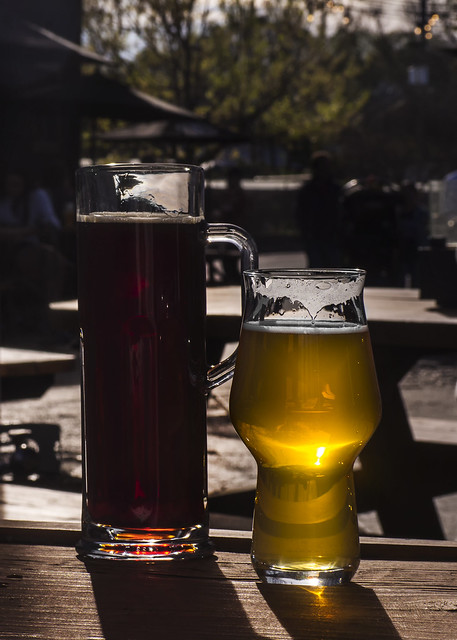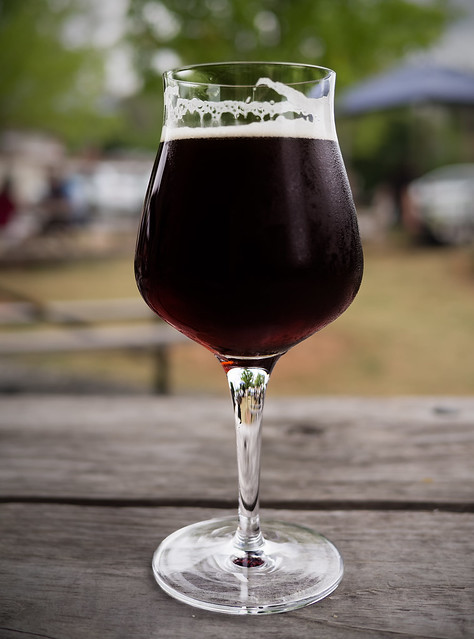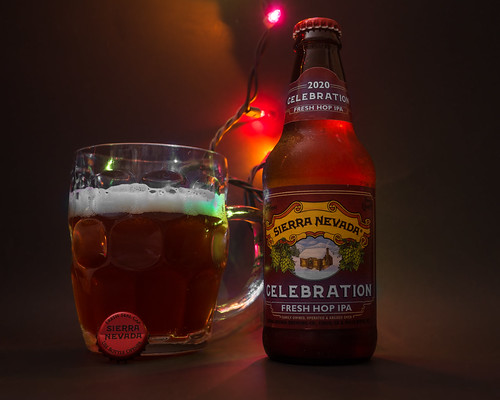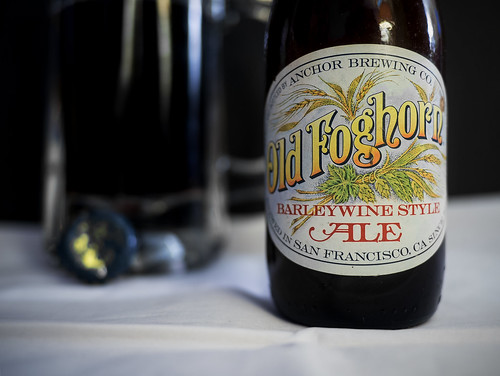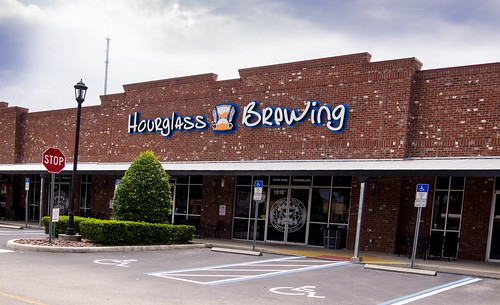Abt 12 is a 'quadrupel'
abbey ale, brewed by
Brouwerij St. Bernardus in
Watou, West Flanders, Belgium.
Seen here, served, on draught in appropriate glassware, at
My Parents' Basement —a combination pub and graphic novel/arcade game emporium— in Avondale Estates, Georgia, USA, on 6 March 2024.
Monks making beer? Why not? Beer —brewed from water, hops, yeast, and
barley malt— is, after all, liquid bread. So, please give us this day our daily bread!
But, like any good story, there's more to it than meets the glass.
***************
St. Benedict and the Trappists
In 529 CE, an ascetic Christian monk,
St. Benedict of Nursia, founded a monastery in Italy wholly centered on prayer, sacred contemplation, and manual labor (“
ora et labora”). With the founding of several other monasteries, his group of followers became known as the
Order of Saint Benedict or
Benedictines.
In 1098,
Saint Bernard of Clairvaux (co-founder of the
Knights Templar) believed that the original purpose of the Benedictines had become diluted. Desiring to more closely follow the
Rule of St. Benedict, he founded a new 'reformed' order at
Citeaux Abbey near Dijon, France. His followers became known as
Cistercians.
So, we come to 1664, when yet another splinter goup of monks wished to further reform the Cistercians. Led by
Armand Jean le Bouthillier de Rancé, the abbot of
La Trappe Abbey in Normandy, France, they created the
Order of Cistercians of the Strict Observance, or, more commonly, the
Trappists (officially becoming a religious order in 1892).
To this day, Trappist monasteries self-support themselves by producing and selling goods such as cheese, bread, fruit preserves — and beer (!)— in order not to make a profit but to simply sustain the necessities for life and prayer.
Let them not be discontented;
for then are they truly monastics
when they live by the labor of their hands,
as did our Fathers and the Apostles
***************
Trappist breweries
By the mid 20th-century, six Trappist monasteries were producing beer, world-wide:
- Scourmont Abbey (producing Chimay)
- Abbaye Notre-Dame d'Orval (Orval)
- Abbey of Notre-Dame de Saint-Rémy (Rochefort)
- Brouwerij der Trappisten van Westmalle (Westmalle)
- Saint Sixtus (Westvleteren)
- Koningshoeven Abbey (La Trappe).
And, not really world-wide, but
Beneluxian: the first five are established in Belgium, the last in the Netherlands.
Fast-forward to 2024. There are three more added to the register:
- Brouwerij Abdij Maria Toevlucht (brewing Zundert) in the Netherlands
- Abbey of Saints Vincent and Anastasius (Tre Fontane) in Italy
- Mount St. Bernard Abbey (Tynt Meadow) in the UK.
Since the 1990s, a few other Trappist monasteries also have opened breweries, only to close them for various reasons —including
one in the United States.
***************
Trappist trademark
Even before Word War II, Trappist monasteries had begun to take legal action against non-monastic businesses which made use of the name “Trappist” for their products. In 1985, the
Commercial Court (now,
Commerical Tribunal) in Brussels made this protection even more explicit:
It is now common knowledge that customers attribute special standards of quality to products made by monastic communities, and this is especially true of Trappist monasteries.
And, in 1997, the
International Trappist Association (ITA) was established, creating standards and a trademark of “
Authentic Trappist Products.”
Our label guarantees the monastic origin of the products as well as the fact that they measure up to the quality and traditional standards rooted in the monastic life of a real Trappist community. Even though this label can be used on other products, at present it is only used on beer, liqueur, cheese, bread, biscuits and chocolates.
Imagine receiving a cease-and-desist letter from a legal agent for God!
***************
Abbey beers and St. Bernardus
Per
Wikipedia:
In 1945, the Belgian Trappist monastery, St. Sixtus essentially stopped selling its Westvleteren beer, brewing only for themselves (but with some sales at the monastery and local taverns). The monks gave a license to a local cheese factory to brew Saint Sixtus beers for outside sales and Brewery St. Bernard was founded. The brew master from Westvleteren, Mathieu Szafranski, became a partner in the brewery and brought along the recipes, the know-how, and the St. Sixtus yeast strain. Since 1992, these beers brewed in Watou, West Flanders, Belgium, have been sold under the brand name St. Bernardus.
So,
St. Bernardus, although not brewed in Trappist monastery and not
ITA-approved, does have an easily traceable
Trappist provenance. Beers such as these — and others brewed to resemble the taste and appearance of Trappist beers or simply pay homage to them— are commonly refered to as “
Abbey” or “
Abbey-style” beers, without any strict legal standard.
***************
St. Bernardus Abt 12
As an old brewmaster once growled: “That's all well and good, but how does the beer taste?”
Generally speaking, the Trappist monks (and their imitators) brew their ales with distinctive yeasts (producing spicy, fruity, and
estery/phenolic character), with extra ingredients, such as
candi sugar (disdained by the
Reinheitsgebot, the
German Beer Purity Law), and often high in alcohol (even though that's not always the case).
The ales often are given the appellations of
Singel,
Dubbel,
Tripel, and
Quadrupel. These designations are ordinal numbers, indicating a ranking (1,2,3,4) of the brewery's beers in order of alcohol content, from less than 6% to more than 10% (by volume). They are NOT cardinal numbers; they do NOT imply double, triple, or quadruple anything.
So,
St. Bernardus Abt 12 —a 'strong'
Abbey-style ale of 10% alcohol— is designated a '
quadrupel.' It pours a dark reddish-brown but, unlike today's 'hazy' beers, if you hold the beer up to the light, you can see through it. The body is lush and somewhat unctious. After aromas of raisins, caramel apples and sweet cooking spice, the flavors are bittersweet chocolate, dark stone fruit, coconut, and malted milk balls. And finally, the finish is warming, with a smooth burn.
***************
Conclusion and the trouble with quibbles
One more thing, though. And, it's a quibble.
All
Trappist ales and most
Abbey
ales — including
St. Bernardus — traditionally have been carboanated. However, the kegged
Abt 12 I drank at the pub pictured above had been nitrogenated — that is, infused with nitrogen gas— at the brewery.
The bubbles of beer come from carbon dioxide (CO2), a gas naturally produced by yeast during fermentation. Yes, many, if not most, beers today are fermented flat — that is, the carbon dioxide is allowed to escape during fermentation and, then, when the beer is packaged (be that in keg, bottle, or can), carbon dioxide is reinjected, under pressure, to create beloved beer bubbles.
But, the fact remains, those bubbles produced by carbon dioxide are part of the natural character of beer. They add, shall we say, 'life' to a beer, a satiating texture (as opposed to a 'flat,' uncarbonated beer).
The bubbles literally transport volatile beer aromatics to the human nose; simply put, without those bubbles, there's less aroma in your beer. Furthermore, the bubbles impart a tactile sharp
yang to the
yin of beer's residual malt sweetness. And, in the human mouth, some of those CO2 bubbles are even converted enzymatically into carbonic acid, adding more balancing 'bite.'
As to nitrogen gas in beer: it's artificially added. It's produced nowhere in the beer fermentation process. Nitrogen does not waft aromas to your nose; it adds no balancing bite to the finished beer. It doesn't even dissolve into the beer well; in fact, the beer under that creamy nitro-head is essentially flat! Nitrogen bubbles just sit there and look pretty. And, I guess that's the point. Creaminess, gentleness, and dimunition of aroma.
So, even though I prefer the get-at-you carbonated, cellar-ageable, and traditional bottled version...how did the nitrogenated draught
St. Bernardus Abt 12 taste? Like a comfortable, boozy, pretty, malted milkshake. And that's not a bad thing!
A series of occasional reviews of beer (and wine and spirits).
No scores; only descriptions.


